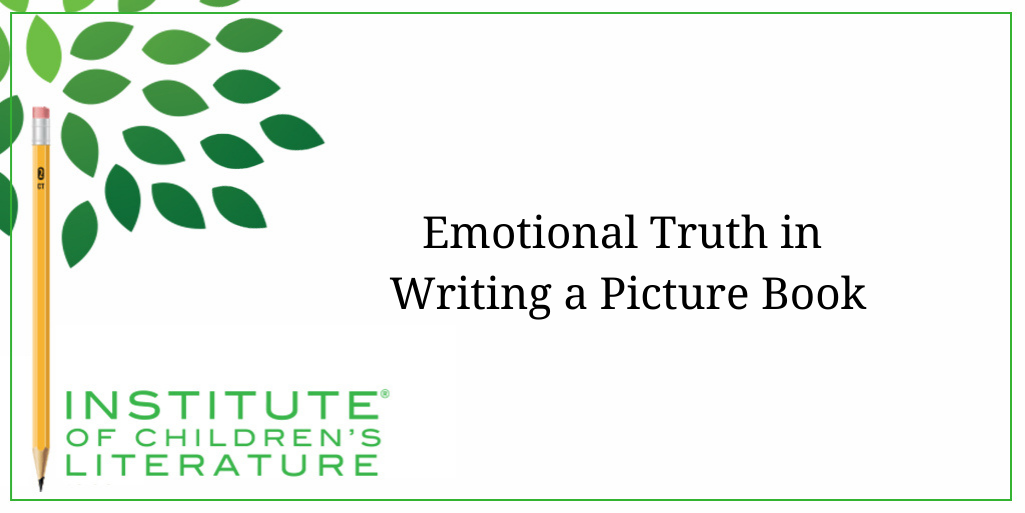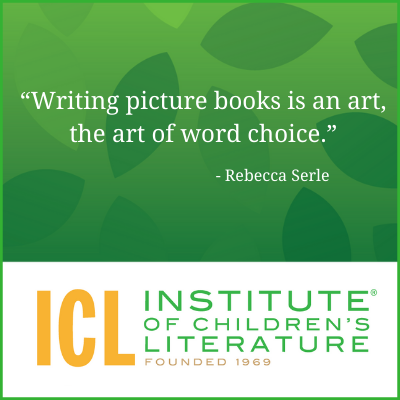
5 Ways Writers Can Prep for 2025 Goal Setting
Before we roll on to the new writing year, let’s harness our optimism for the blank slate before us and prepare for our 2025 Goal Setting just for writers.

Picture books tend to be based on at least one of three things: character, plot, and concept. Many combine two or even three of these into a single book. In nonfiction picture books, the most popular genre in trade publishing is narrative nonfiction, where character and story are front and center.

Because these three things are so often present in picture books, you’ll hear books classified by the element of these three that seems the most important.
A picture book where the main character is front and center, like Olivia by Ian Falconer, is often said to be a character book because the character appears to be the most important thing in the book.
A book like Jabari Jumps by Gaia Cornwall would be considered a plotted picture book because the story follows a clear, almost classic story plot, namely one where a young child overcomes a fear.
We are Water Protectors by Carole Lindstrom and illustrated by Michaela Goade is a lyrical poetic recitation of what water means to humanity and is told in first person. The importance of protecting clean water is the concept, but the book also includes connections to community, family, and the concept of duty. The emotional connection in the book makes the concepts especially compelling.
Establishing an emotional connection is another element to consider when writing a picture book.
Though picture book characters are often huge, larger-than-life creations, sometimes they are very much ordinary children with all the wonderful unique qualities of an ordinary child. For example, in the aforementioned Jabari Jumps, Jabari is a normal, exuberant child. He’s recently completed his swimming lessons and did quite well, and he is excited to jump from the diving board. But the reality of looking up at the diving board where the children on it were “as big as tiny bugs,” suddenly doesn’t feel quite as safe or fun. Jabari covers his growing alarm with a little bravado by declaring it “looks easy,” but he’s definitely shaken up.

Not all picture book characters are represented by children (though virtually all will have some childlike qualities). For example, in Max the Brave by Ed Vere, the titular character is a little black kitten. Max is very cute and people underestimate him as a result and dress him up with bows. He does not approve of this as he sees himself as a brave, bold cat. This is an idea young children can relate to as they often find the way they are perceived does not line up with the way they see themselves. Unfortunately, Max wants to be a cat who chases mice, but he has no idea what a mouse looks like. He’s never seen one. So, he goes in search of a mouse to chase and has a rather big adventure as a result. The book works because it is lively and funny, but it also works because it’s emotionally true at its core. It resonates with children.
In Sulwe, an award-winning picture book written by Lupita Nyong’o and illustrated by Vashti Harrison, the titular character has the darkest skin in her family and darker skin than many of the children around her. She is grieved by the way others respond to that, and her own view of herself is affected as well. The author takes Sulwe on a journey of self-understanding and acceptance with love and a good bit of magic. The book is about pointing at a real problem, colorism, and offering both understanding for those who don’t experience it, and encouragement (as well as a sense of being seen) for those who do. The main character herself is neither larger than life nor bold. She’s a hurting child, but her pain feels real. She has an emotional depth we believe. As with We are Water Protectors, the plot isn’t exactly the book’s main focus, but the exploration of the concept and the emotional truth are more than enough to make these concept books work.
This element of emotional truth is almost universal in picture books so it is less useful in categorizing books and thus can seem as if it’s less important, but it is not. Emotional truth is one of the ways a picture book hooks young children. It gives them a point of commonality from which the picture book can take them somewhere new or give them something new to think about. Emotional truth is one of the things that helps a charming picture book become a classic because it results in a book that is more than engaging; it results in a book that lingers in the mind of the reader.
If you’re preparing to write or are in the middle of writing a picture book, you’ve probably heard some rules. Possibly even a lot of them. And one would certainly be that children like active main characters. This is true, but is it a “rule” that means we must always write active main characters?

The depth of the book comes from all the creatures living around it, and from the way the book connects the idea of a thing or a place in changing lives and building memories. That is where the deepest emotional truth of such an odd main character lies. The book matters because the book feels true, and it feels true because the reader connects to it emotionally. We all have places and moments that stay important to us even when they are gone.
If there is one real rule that picture book writers ignore at their own peril, the rule would be that your book needs to be emotionally true. Real connections to picture books, whether the book is funny or silly or rollicking or lyrical, are emotional. It’s the shared emotion in the story that makes it feel true. But don’t be afraid to hint at the emotion and let it unfold slowly rather than stating it outright. Make it something the reader needs to think about. Unfold the emotional truth in the way that works best for your book and your story. However you handle its truth be sure to include heart when writing a picture book.
That’s where you’ll meet your reader.
With over 100 books in publication, Jan Fields writes both chapter books for children and mystery novels for adults. She’s also known for a variety of experiences teaching writing, from one session SCBWI events to lengthier Highlights Foundation workshops to these blog posts for the Institute of Children’s Literature. As a former ICL instructor, Jan enjoys equipping writers for success in whatever way she can.

Before we roll on to the new writing year, let’s harness our optimism for the blank slate before us and prepare for our 2025 Goal Setting just for writers.

Writers can be thin-skinned when it comes to getting feedback on their work. Let’s look at 4 ways to positively deal with constructive criticism!

Rejection is part of the territory when it comes to being a writer. Today we offer reflection for writers to help redirect your efforts after a rejection.
1000 N. West Street #1200, Wilmington, DE 19801
© 2024 Direct Learning Systems, Inc. All rights reserved.
1000 N. West Street #1200, Wilmington, DE 19801
© 2024 Direct Learning Systems, Inc. All rights reserved.
1000 N. West Street #1200, Wilmington, DE 19801
© 2024 Direct Learning Systems, Inc. All rights reserved.
1000 N. West Street #1200, Wilmington, DE 19801
© 2025 Direct Learning Systems, Inc. All rights reserved.
1000 N. West Street #1200, Wilmington, DE 19801
©2025 Direct Learning Systems, Inc. All rights reserved. Privacy Policy.
4 Comments